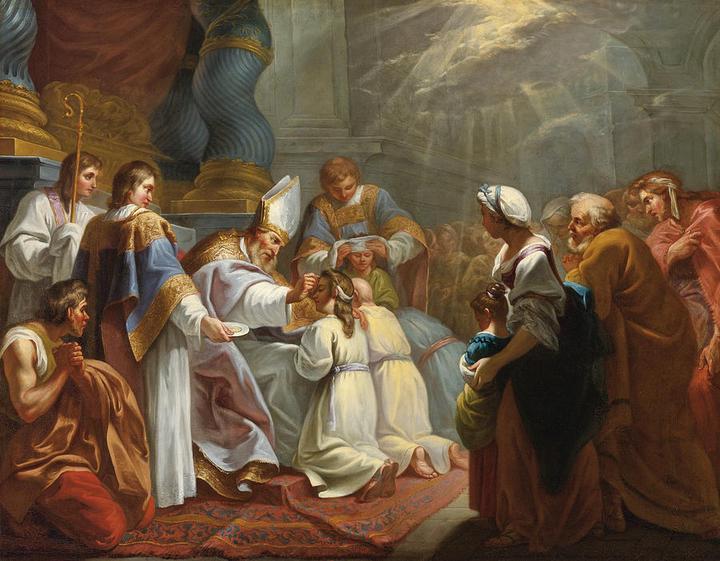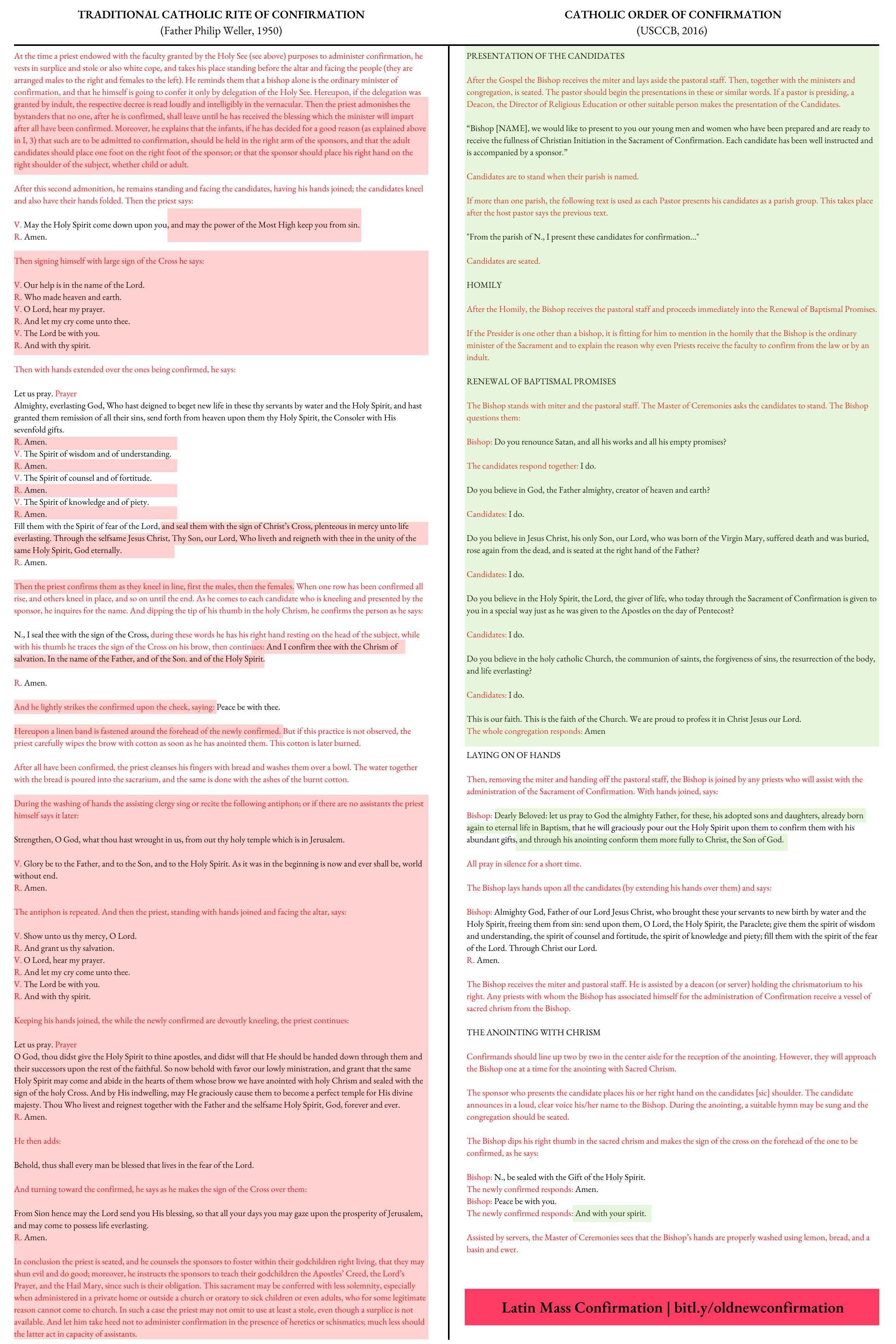Comparisons of the traditional and the Novus Ordo Rites of Confirmation

Jacques Dumont, The Sacrament of Confirmation (18th century)
About
The Rite of Confirmation was changed dramatically after 1969.
The Latin text currently in effect (from the third typical edition of the Roman Missal) is extremely difficult to find, and I am unable to include it in any comparisons.
In the meantime, we can compare the old and new English texts for the Rite of Confirmation.
- For the English text of the traditional Rite of Confirmation, I have used Father Philip T. Weller’s Roman Ritual, volume III.
- For the English text of the current Rite of Confirmation, I have used the USCCB’s Order of Confirmation, published in 2015, and required in 2016.
I haven’t changed any part of the text, but I have taken several liberties with formatting in order to make a visual comparison.
Sections in red are texts/rubrics removed in the new rite; section in green are texts/rubrics added in the new rite. As a disclaimer, the missing texts/rubrics may appear elsewhere in the Novus Ordo Ritual Mass for the Conferral of Confirmation. It is difficult to compare traditional vs. Novus Ordo ritual texts after a certain point, because of the number of options available in the Novus Ordo rites.
My comparison

Some textual differences
- Interestingly, both rites are about the same length (about 900 words), but there is very little in common in the old rite versus the new.
- The new rite adds a renewal of baptismal vows, and removes most of the dialogues between bishop/priest and server (“Our help is in the name of the Lord”).
- Both rites have a laying on of hands, an invocation of the Holy Ghost, and a prayer for the seven gifts of the Holy Ghost. The wording of all three differs.
- Both rites have an anointing with chrism. The wording differs, and the new rite is shorter.
- The new rite removes all prayers after the anointing with chrism.
Some rubrical differences
- In the new rite, the chrism does not have to be olive oil.1
- The new rite removes the rubrics regarding the order of confirmandi (first men, then women).
- The new rite removes the bishop’s/priest’s light slap on the newly confirmed’s cheek.
- The new rite removes the rubrics that remind the sponsors of their obligations.
Other comparisons
Sources
“The matter for all three oils is olive oil or another plant oil (see OBO, no. 3).” from: USCCB, “The Blessing of the Oils and the Consecration of the Chrism.” “The Blessing of the Oils and the Consecration of the Chrism.” In The Order of Blessing the Oil of Catechumens and of the Sick and of Consecrating the Chrism United States Council of Catholic Bishops, 2016. https://www.usccb.org/prayer-and-worship/sacraments-and-sacramentals/sacramentals-blessings/blessing-of-oils-and-consecration-of-chrism ↩︎
“The Rite of Confirmation,” The Latin Mass Society of England and Wales, https://lms.org.uk/sites/default/files/resource_documents/Rite_of_Confirmation.pdf. ↩︎
Hunwicke, Fr John, “The Sacrament of Confirmation (Part 1),” Fr. Hunwicke’s Mutual Enrichment, December 22, 2021, https://liturgicalnotes.blogspot.com/2021/12/the-sacrament-of-confirmation.html?m=1; “The Sacrament of Confirmation (Part 2),” Fr. Hunwicke’s Mutual Enrichment, February 3, 2022, https://liturgicalnotes.blogspot.com/2022/02/the-sacrament-of-confirmation-2.html?m=1. ↩︎